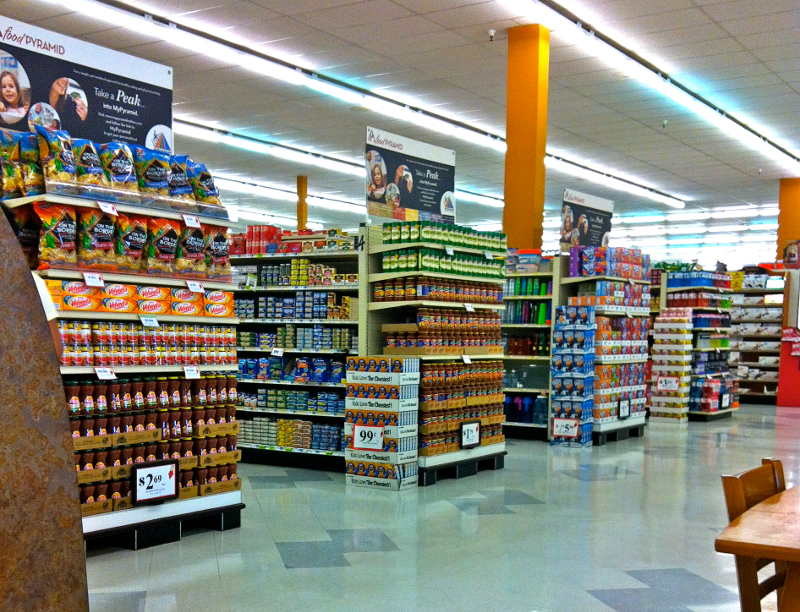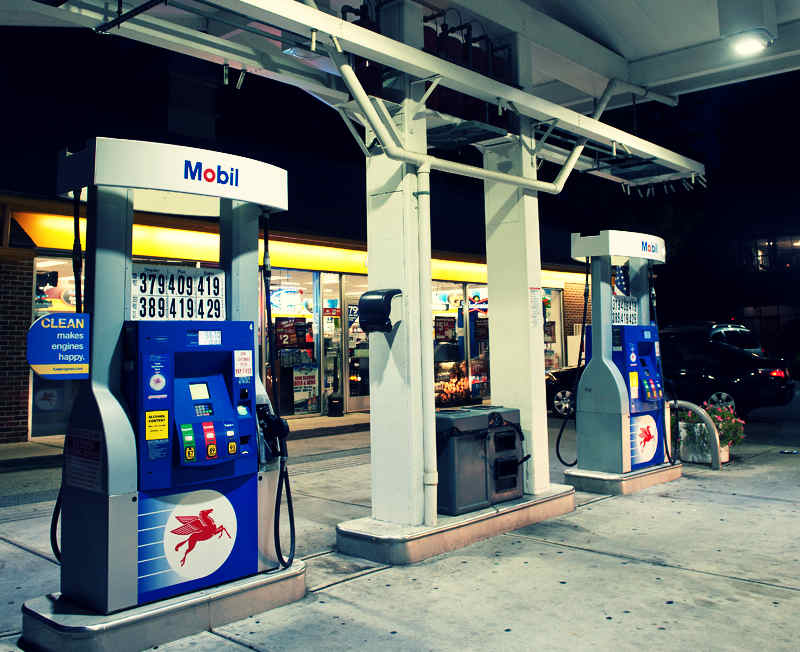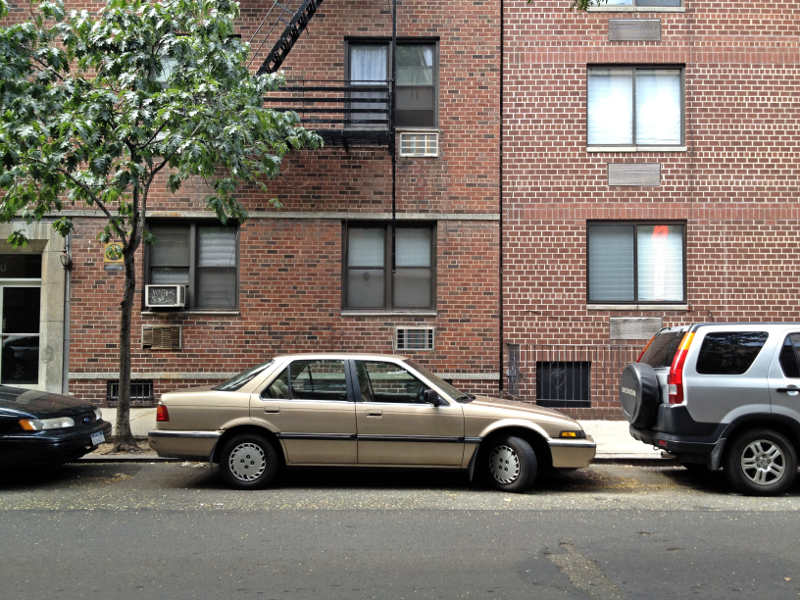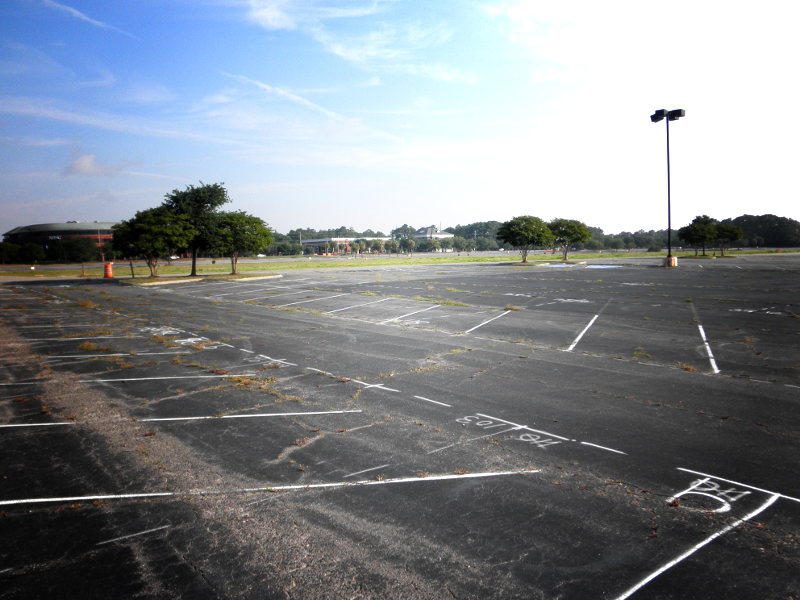No concealed carrier plans on being stuck in a firefight. Most concealed carriers aren’t equipped or trained to be in a prolonged fight. As a general rule, if you’re able to escape – do so. With that said, situational awareness can help you know where to position yourself – and where not to position yourself.
Here’s six places you want to avoid should you need to use your concealed carry handgun in self-defense.
Two quick definitions:
Cover
Cover is something that’s reinforced with concrete, steel, or earth that can block, absorb, or deflect small arms fire.
Concealment
Concealment is any surface that obscures you from your attacker. It can be something as simple as a hedgerow of bushes or even a door.
Concealment does not guarantee cover.
1. Between The Aisles At A Grocery Store

As soon as is feasible, clear the aisle you’re on. Grocery store (and convenience store) aisles can serve as temporary concealment but are not to be considered cover. Being in one exposes you on either side to attack. Try to move to either a covered position – such as a waist-high cooler – until the opportunity presents itself (or incidence dictates) a good place to move.
2a. Gas Station Pump

Most gas stations have automatic and manual shut off valves to stop fuel flowing to the pumps in the event of an emergency. Do not depend on those to be immediate or effective. Clear the fuel pumps. Use vehicles as temporary cover until you can get to a better position.
2b. Propane Tank Rank

Many gas stations have propane refueling cabinets where you can drop off your old cylinders and pick up refills. Don’t be here, either – for any amount of time. It’s not cover and it’s definitely not concealment.
3. Alleyways

Alleyways can sometimes have unexpected opportunities for cover and concealment – such as dumpsters or loading bays. In general, they should only be considered when there are no other feasible options. Don’t get penned down an alleyway you can’t get back out of. And when you go down an alleyway, please do check ahead as well as behind. Speed, obviously, being of the essence, do not make a perfect target for your attackers.
4. Parked Car – “Fish In A Barrel”

Cars are a mixed bag. On one hand, they can potentially deflect a limited amount of direct fire but that comes at the sacrifice of movement. Freedom of movement is one of your greatest pals in a firefight. It may sound counter-intuitive but if you are inside a parked car when a firefight breaks out, either attempt to use that car to conceal yourself as best as possible or get out and try to use it for cover until you can get to safer ground. As a concealed carrier, you at least have that option.
5. Open Space

Open space is defined as a plane with absolutely no cover or concealment. This is where everyone and everything standing becomes a perfect “dog target” silhouette. In the absence of all cover, get onto your belly. This reduces the surface area that is exposed to bullets. This greatly reduces your mobility. Now you can assess the situation to determine if you can sprint to cover. If it’s not feasible, use the prone position to your advantage to place well aimed shots downrange at your attackers.
6. Hallways And Corridors

Just like alleyways and aisles – hallways and corridors are danger zones. Not only do you have to incrementally clear each doorway as you pass by it, you are stuck with your back exposed during the process. Further down in the article, we talk about the technique for clearing doorways by yourself. Generally speaking, if you can find a room to hole up in until help arrives, you’re not doing too bad. Plus, with your concealed carry handgun, you can at least cover one doorway versus having to cover 360 degrees.
Find The Goldilocks Recipe For Movement
Too much movement – bad. Can’t move? Bad. Generally, many instructors advise you to stay put and low to the ground until law enforcement arrives. This may work. As we’ve seen in incidences like the Virginia Tech massacre and others, that’s not a guarantee.
If you can’t read your attacker’s mind, your only priority is to give yourself as much distance as possible. That means you’ll need to move at some point. In a firefight, you don’t know how many attackers there are, they’re exact locations, or their capabilities. All you know is bullets are being fired. So you’re going to piece together as much information as you can, in a short period of time, and use your concealed carry firearm to act as a lethal force option in securing your escape.
Movement In A Firefight
Sometimes you need to move now. And when that happens, sprinting may be the only option. When you’re crossing an open space where you’ll be exposed to hostile fire – consider first if you need to. If you don’t need to, don’t. If you do – try to cross that distance as fast as possible. Don’t bother with running in a zig-zag pattern. Your only job is to minimize the time you are exposed to fire – that’s it.
You’re looking for shortest time exposed plus maximum distance from attackers gained.
When you’re running, identify the place you need to be. That place should be one that is more supported and provides a greater degree of cover and concealment than the place you’re in. If it doesn’t – don’t bother.
- Clear Spaces Incrementally (“Slice the pie“)
If you don’t know what’s around a corner, clear it incrementally. That means dividing the space of the area into pieces of a pie and carefully advancing until you see there’s no attacker in those spots. If you don’t know where the attackers are coming from – how many/where – assume each corner needs to be cleared. If your back is exposed while doing this, divide your attention between your exposed points and the area you’re actively clearing. Once you’ve secured an area, try to move out of that exposed position as soon as possible.
- An Example Of Ideal Cover
Ideal cover is any space that affords reasonable protection against small arms fire while reducing the number of angles an attacker can approach you from. A great example of this would be in the corner of a concrete room in a basement with a steel cabinet and a closed door. You have a limited field of fire you need to cover and the attacker has to press in, exposing himself to defensive fire – ideal.
- An Example Of Non-Ideal Cover
The least ideal cover would be inside a parked car. Not only do you still have a 360 degree field you have to cover, the vehicle affords you no room to move if you begin taking fire.
Can you think of any other spaces you should avoid?

